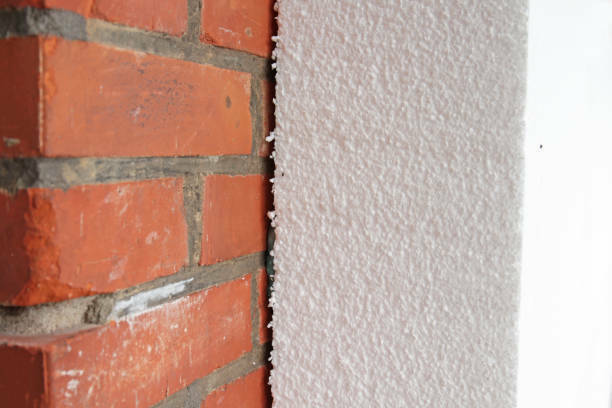Free Call Now

Did you know that as much as 35% of the heat from your home is lost through uninsulated external walls?
It's a shocking figure that proves how essential it is to have an insulation layer in the walls of your home. Heat loss within our homes is a major concern, especially these days when people are more environmentally aware and are trying to lower their carbon footprint. And energy efficiency isn't just about helping the planet. Insulating your home properly will keep you warmer in winter, cooler in summer, and help to reduce heating bills.
It makes sense to ensure that your outside walls are properly insulated to stop the heat from escaping.
But how much do you know about the subject? Here's a simple guide to help you out.

If you own a property that was built from the 1990s onwards, there's a fair chance that it will have some sort of external wall insulation.
Broadly speaking, houses are divided into two groups: solid wall, and cavity wall. Any property built before the 1930s will most likely have a single layer of brick or masonry – a 'solid wall'.
After this time, houses were generally built with two layers (usually brick walls and cinder block) that have a gap in between, known as cavity walls. The idea behind this was to provide an outer 'skin' that protected the inner wall from moisture. However, this didn't always work as well as originally planned, and moisture and water vapour still made its way into properties. The level of insulation, though better than that in solid wall buildings, wasn't as high as expected.
This is all down to 'convection', where cold air falls and warm air rises, and 'conduction', which is the transfer of heat through materials. The air trapped between the two layers can be affected by the inner and outer temperatures, and when the temperature falls below the 'dew point'(the point at which water vapour and moisture are suspended in the air) then condensation will form on the wall surface.
Aside from the fact that condensation can cause problems itself, cold bridging (or thermal bridging) can occur. This happens when there is a temperature difference in the cavity, and heat finds its way through the material, or section of material, that offers the least resistance.
Your walls, roof, floors, windows and door frames are known collectively as the thermal envelope. Together, they can provide an effective barrier that slows heat loss, but will never stop it completely.
An effective cavity wall insulation system isn't designed to keep the cold out, but to slow the escape of heat from the walls. It traps the air within the cavity and drastically slows down the transfer of heat through the materials.
Although most modern brick wall homes have some form of insulation built in, thousands of properties are still without adequate insulation or were insulted in the 1970s with materials that have degraded over time, resulting in loss of heat and condensation issues. These days, insulation solutions are far superior to those earlier examples and it is well worth investigating the possibilities. This is a great way to lower your heating bills as well as reducing your carbon footprint!
Over the years, the range of insulation types has grown, giving the customer more choice. Also, the performance of each insulation material has improved as modern technology has been applied, increasing the savings you can make on heating costs.
Here's a list of the most common insulation materials used today:
These are all types of cavity wall insulation materials, mainly used in brick wall buildings.
Of course, solid wall properties don't have cavities, especially older homes with stone walls, so cavity insulation isn't an option. Here you have a choice of internal insulation or external solutions, using insulation boards. The first choice will reduce your inside floor area, whereas the second will alter the look of your home.
Masonry walls tend to be breathable, allowing water vapour to pass through, so it is important to choose a solution that keeps this quality
Whether you have brick walls or masonry walls, another way in which insulation can be improved is through the application of cladding, such as brick slips, pebble dash, or timber panels. These can improve the appearance of your home as well as adding a protective layer.


It all depends on the building type and where it's situated. Different wall insulation solutions suit certain properties, but there are restrictions in some cases. For example, period properties or houses situated in conservation areas may be limited as to which type can be applied.
Each different type of wall insulation installation process has its own processes and challenges, and to find the most suitable one it is best to seek advice. An expert insulation installer has the knowledge and experience to guide you through all the various issues involved.
The good news is that you may be eligible for a green homes grant which can cover up to £5,000 of the total cost.
You could dramatically increase the energy efficiency of your home, driving down the heating bill and doing your bit for the planet!
Information about this soon!
